Is It Easy to Build a Bow
This story was originally featured on Outdoor Life.
The bow and arrow have been utilized by hunters and warriors for thousands of years. A simple-yet-elegant weapon, it's provided meat and aided in defending civilizations for centuries. Today, bows have gone high-tech, like compounds, crossbows, and carbon-fiber arrow shafts affixed to razor-sharp broadheads. But we shouldn't forget the traditional bows and arrows of our ancestors. They can provide us with a bounty of wild game or defense from predators in a primitive survival situation.
If you find yourself alone in a perilous backcountry situation, here are the items you can use to build a traditional bow and arrows.
Gather the right stuff

Choosing the right materials is the first place to start when constructing bows, arrows, and other archery tackle. For the bow, you'll want a strong-yet-flexible wood that wants to snap back into its former shape after bending. When it comes to arrows, you'll need to select woody coppice growth, shoots, and saplings that are sturdy and close to the final diameter you want for your arrows. Drawknives, rasps, cabinet scrapers, sandpaper, and power tools will allow you to make great bows at home, but in the wild, a good knife should be enough to carve the stave.
For same-day shooting, pick a bow stave that is dead and dry, but not rotten. For future bow-making endeavors, cut some live wood and dry it for a few months for best results. Choose hardwood species like Osage orange, black locust, and hickory for bows (though many other hardwoods can work). Choose a bow stave that is relatively straight and generally free of knots, side branches, and twists, roughly 2 inches in diameter. Cut it to a length about 5 or 6 feet long, but err on the side of length. The longer the bow, the less it has to bend to reach your draw length, and the less likely it is to break.
Use charcoal as a marker
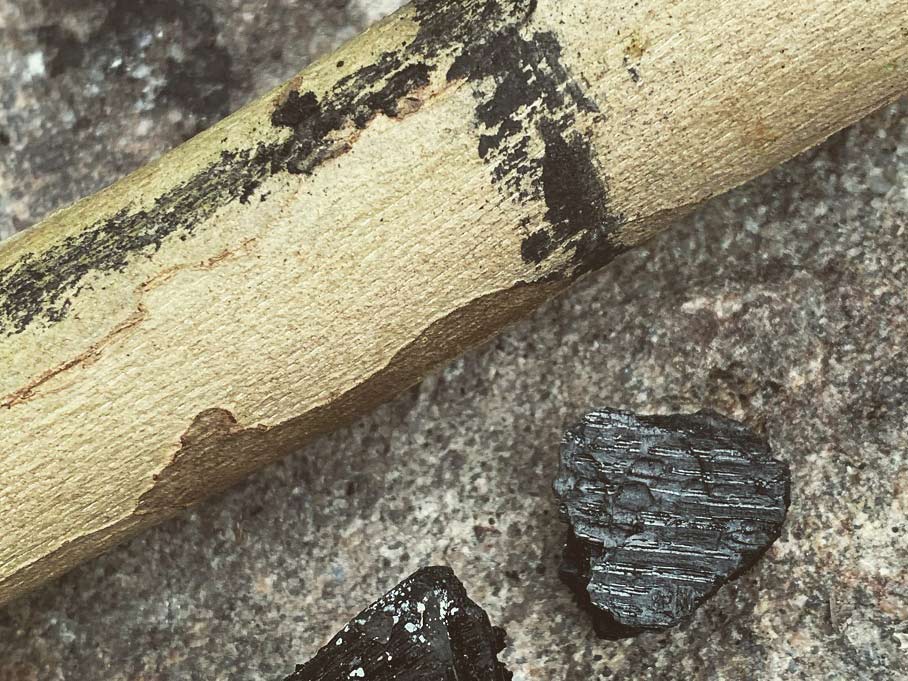
For a single piece of wood, bows do seem to have a lot of parts. Even though it may have come from the limb of a tree, the bow will have two limbs of its own (an upper and lower), a grip, a back, and a belly, among other parts. Understanding the back and belly of a flexible stick is the most critical part for a bow maker. Each sapling or branch will have a natural way that it wants to bend. This will determine where you carve and how the bow will be built. Try bending your prospective bow stave in several directions and make note of the way it bends naturally. Mark the stick on the inside of the bend so you know exactly where to carve (I like to use charcoal). This will become the belly of the bow, which is the side that faces the archer (not the side of the bow facing the target).
Carve the bow
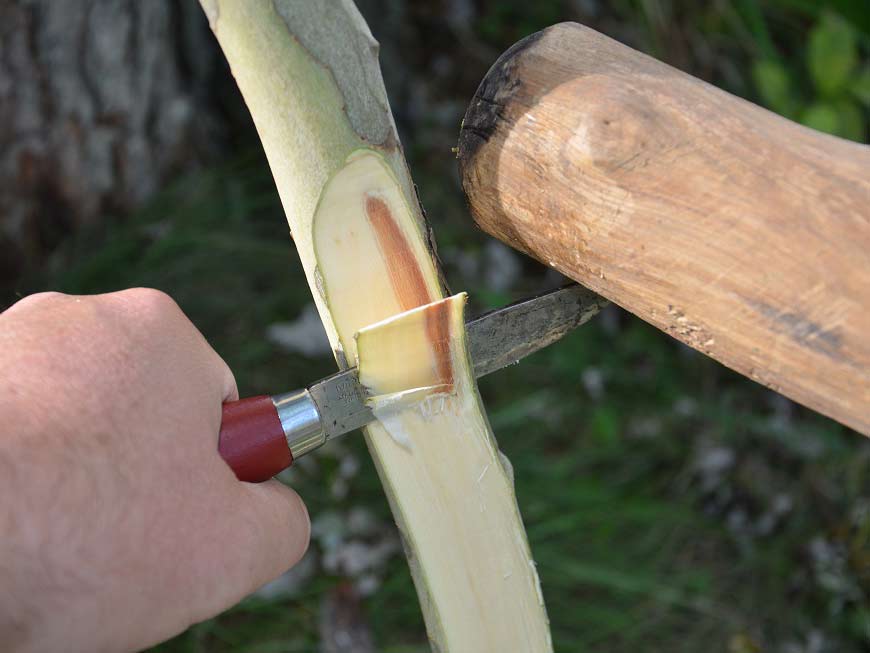
Begin removing wood with a knife from the belly of the limbs where they do not bend much, while leaving material in the areas of the limbs that bend a lot. Only remove wood from the belly side of the limbs—leave the back untouched. The goal at this stage in the process is to get the limbs to bend evenly in a curved shape throughout their entire length. Take off material slowly and re-check the bend of the limbs frequently. Use basic carving slices or try the combination of a small baton and knife together for faster reduction. The grip area (in the middle of the bow) and the limb tips should have very little bend. Thick staves will take a lot of carving while narrow-diameter staves may only need a little shaping. Refine each limb so it bends evenly throughout its length, with each limb bending like a mirror image of the other. This final shaping is called tillering, and it's a step you can't rush.
Make a notch for the string
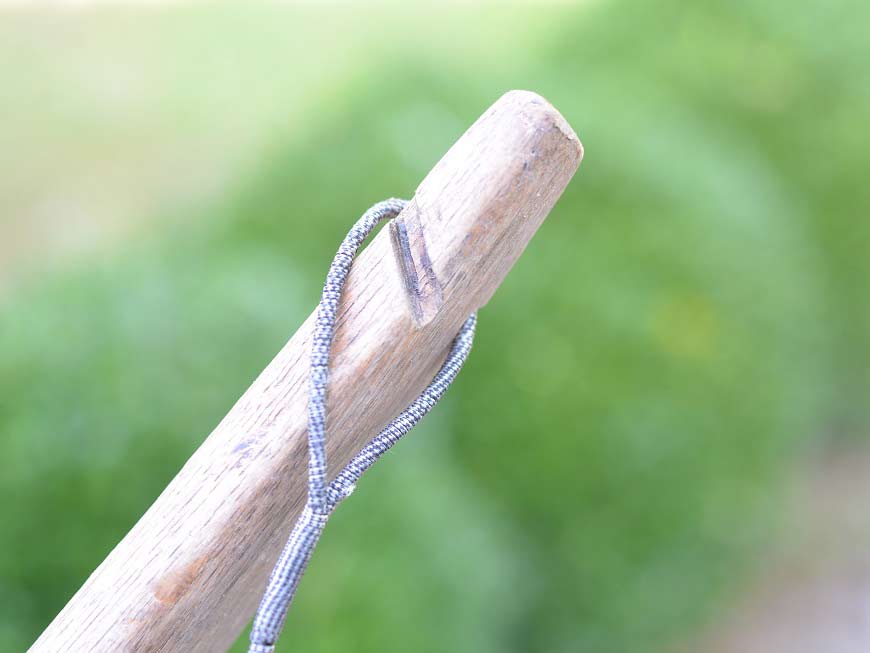
In order to fit your string to the bow, you'll need to carve or file some small notches on both sides of each tip, being careful not to carve into the back of the bow. They only need to be deep enough to keep a bow string in place. Going too deep will weaken the bow and create a spot that may break. Another option, which I use often, is to cut a square tab at the end of the bow. This can be done with a saw, and it's a fairly strong place to loop the string. Any notches can be reinforced for strength. The ends of each bow limb can be wound with strong cordage, or covered by a protective sleeve. Horn tips were a common fixture in the past, but string wraps will work just fine in a contemporary survival setting. String notches can be created when the bow is halfway done, and it can allow a string to be used for gentle bend testing (to see which parts of the bow need more carving). Just be careful not to pull back too far on the string while you are still carving the bow (doing so can break it).
Mix your own glue
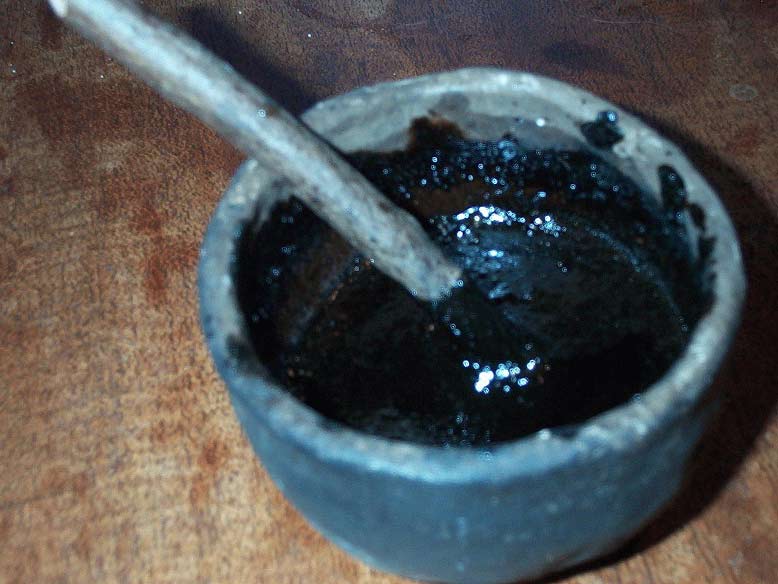
When securing an arrowhead to an arrow shaft, a little drop of glue can go a long way. If you're out of super glue, or didn't bring any, there is an option. Pine sap and the sticky sap from other needle-bearing trees can be collected and cooked to create heat-activated glue that has been used by our ancestors for millennia. You'll just need some sap (either fresh and sticky, or dried and crusty) and a container to heat the sap (an old metal can works great). Collect your sap in the container and cook it near the fire to liquefy it. You can add charcoal powder to the sap while it is hot, to increase your volume and act as an aggregate (like gravel in concrete). Don't be alarmed if the hot pine sap catches fire. Just cover the container and it will go out. You'll only need to cook it for a few minutes, and it can be used immediately or allowed to cool and harden for future use. You'll only need to reheat it and apply it hot to preheated surfaces. For example, heat up the pitch, the arrowhead, and the arrow shaft. Smear the pitch on the hot arrowhead and insert it into the notch on the arrow shaft. Hold it steady until it cools and hardens (that won't take long). Work quickly, and reheat anything that didn't work out as planned.
Build some arrows
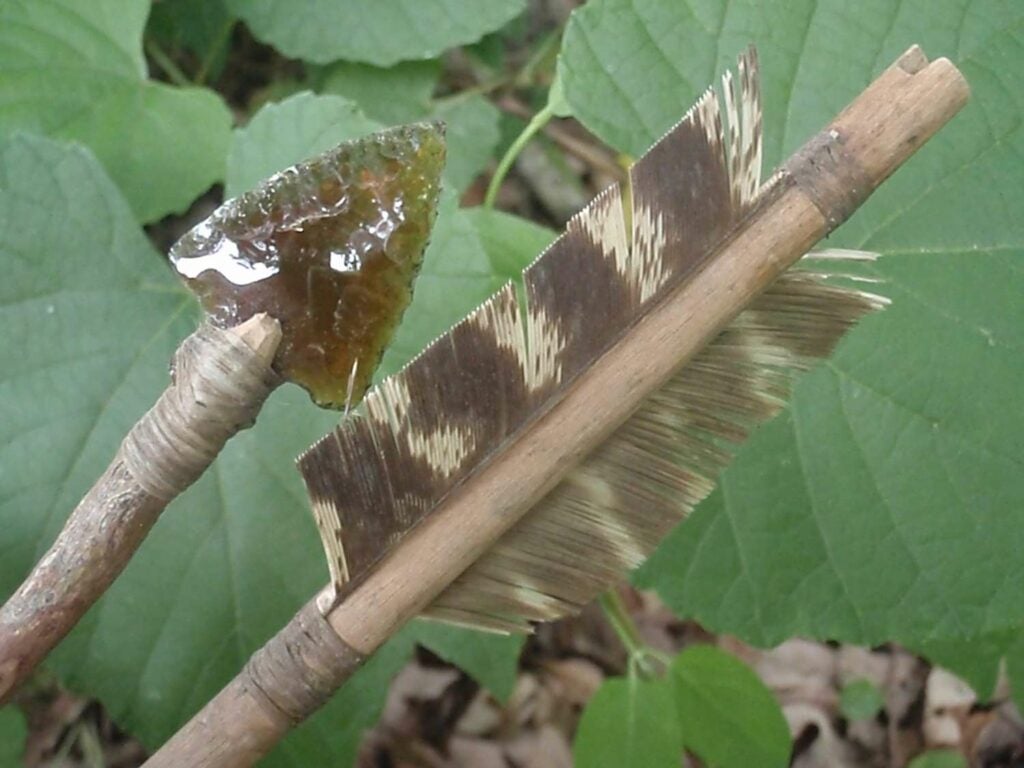
Start by collecting some straight branches or saplings that are at least 30 inches long with diameters between ⅜-inch and ½-inch. Like the bows, these are best when dead and dry, but you may have to work "green" wood in a pinch. Trim and straighten them as best you can and cut an appropriately sized notch in each end of the shaft. The "nock" end should fit the bow string snugly, and the arrowhead end should fit the projectile point you'll be using. These notches are best cut in with a saw. Try to avoid splitting the arrow shaft, as this will weaken it. Attach your feathers and figure out which kind of arrowhead or point you'll use based on your available materials
- Warning: Never use a homemade wooden arrow on a modern compound bow. The high strength and speed of a compound bow can cause wooden arrows to literally explode, rather than launch from the bow, resulting in serious injury.
Fletch your arrows with duct tape
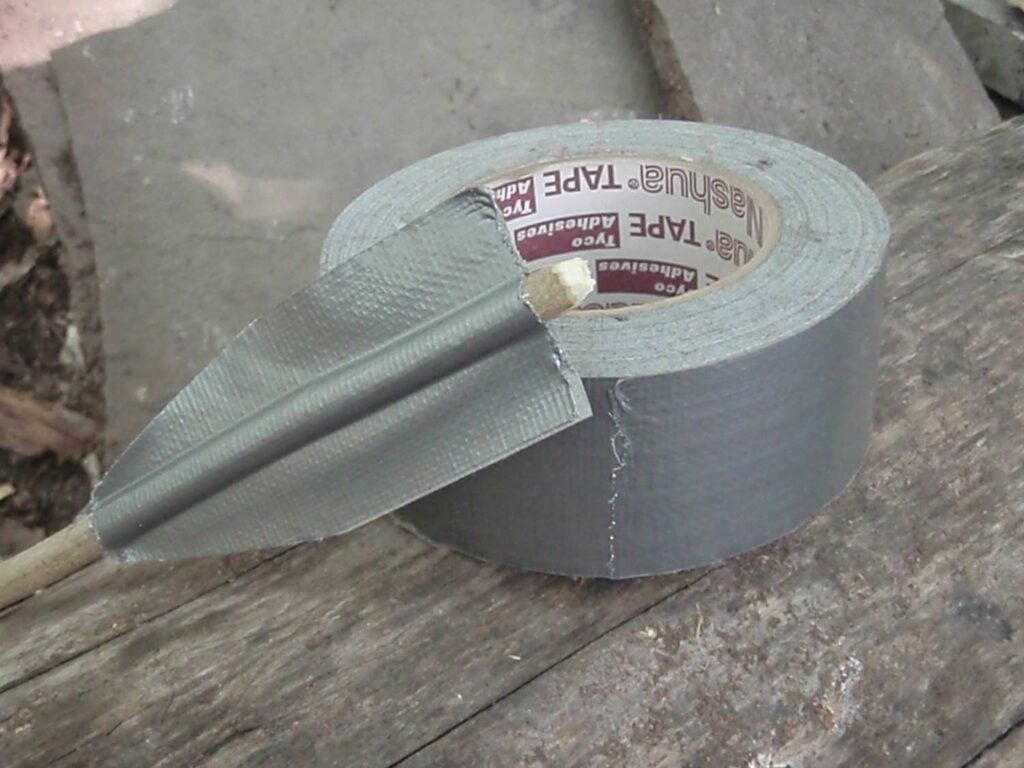
You won't always have the perfect materials for the job in a survival setting. However, those who have duct tape in their kit have a material that can be used for a multitude of jobs. Whether you are repairing existing arrows with torn fletching or making an arrow fletching directly from duct tape, it can work wonders. To make duct tape "feathers" on your arrow shaft, simply sandwich the end of the shaft between two pieces of duct tape (sticky sides together) and trim off the excess. That's it, you're done. Your arrows won't fly as well as they would with feather fletching, but they will fly truer than with no fletching. Give it a try, you might be surprised how easily this technique works.
Turn 550 cord into a bow string
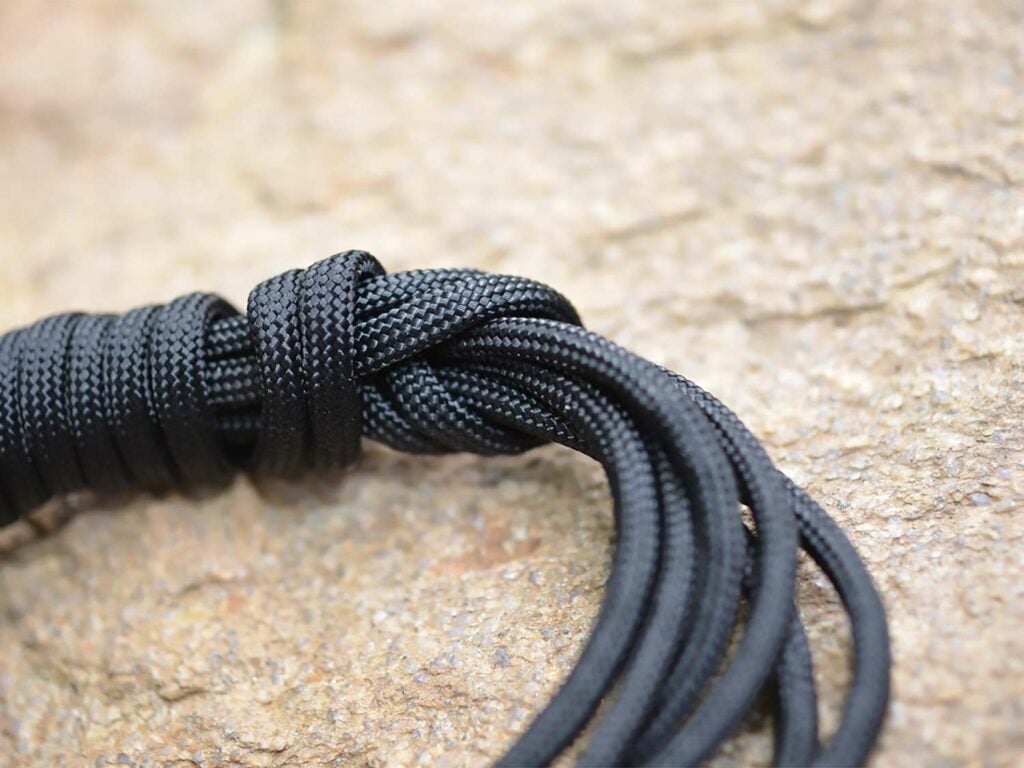
Like duct tape, 550 cord can tackle a lot of tough jobs. It's also the right thickness to pass as a bow string. Right out of the package, it has a little too much stretch (bow strings shouldn't stretch—it absorbs some of the bow's power from each shot). Twisting them can remove much of this unwanted stretch. To make your bow string, tie loops into both ends of the 550 cord, using bowline knots or a similar fastening. The string should be 2 inches shorter than the bow length. This will give you a gap of 5 to 6 inches between the string and the handhold when the bow is strung.
Make beer bottle arrowheads
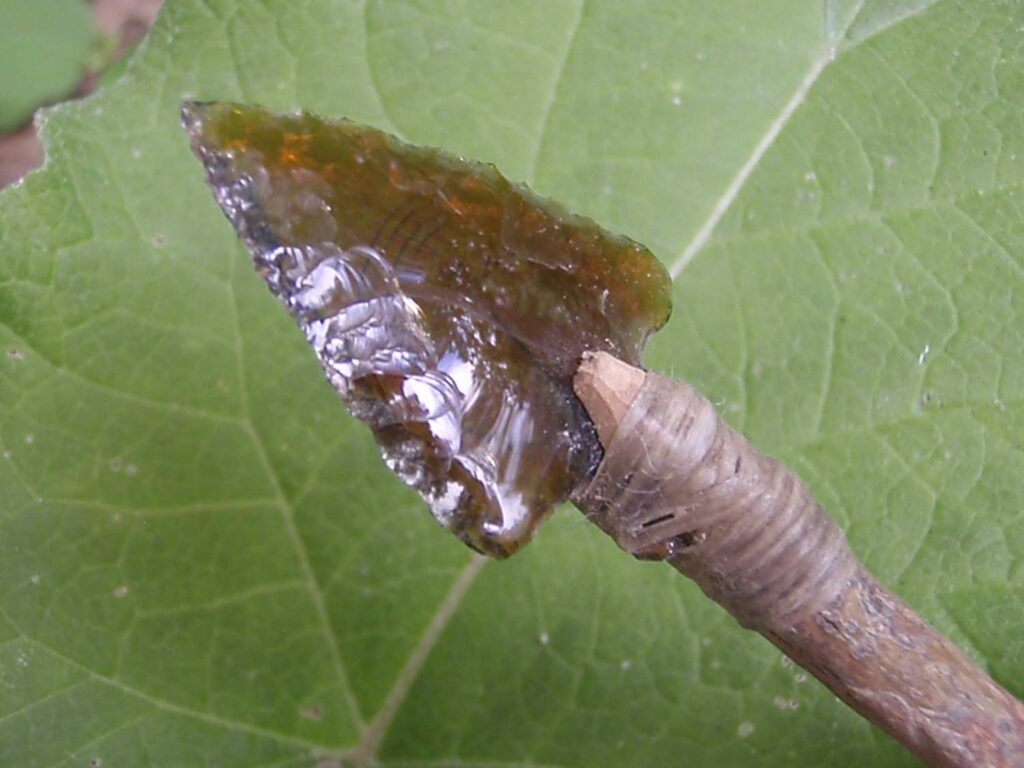
For hundreds of years, humans have tried to fashion all kinds of arrowheads. From elaborately flaked stone points to carefully carved bone and antler tips, there are many examples we can use as an example or inspiration. Today, simple arrowheads can be cut from thin metal, chipped from glass or stone, or you can simply carve a "field point" on the shaft itself. If you add a point, consider reinforcing it. Add glue to the notch and then insert the arrowhead. Wrap twine, floss, dried sinew segments, or dogbane fiber around the shaft and arrowhead to add support. You can also seal your wrappings with more glue to make sure that both the arrowhead and the binding stay in place.
courtneywhoustinity99.blogspot.com
Source: https://www.popsci.com/story/diy/make-diy-bow-and-arrows-survival/
0 Response to "Is It Easy to Build a Bow"
Postar um comentário